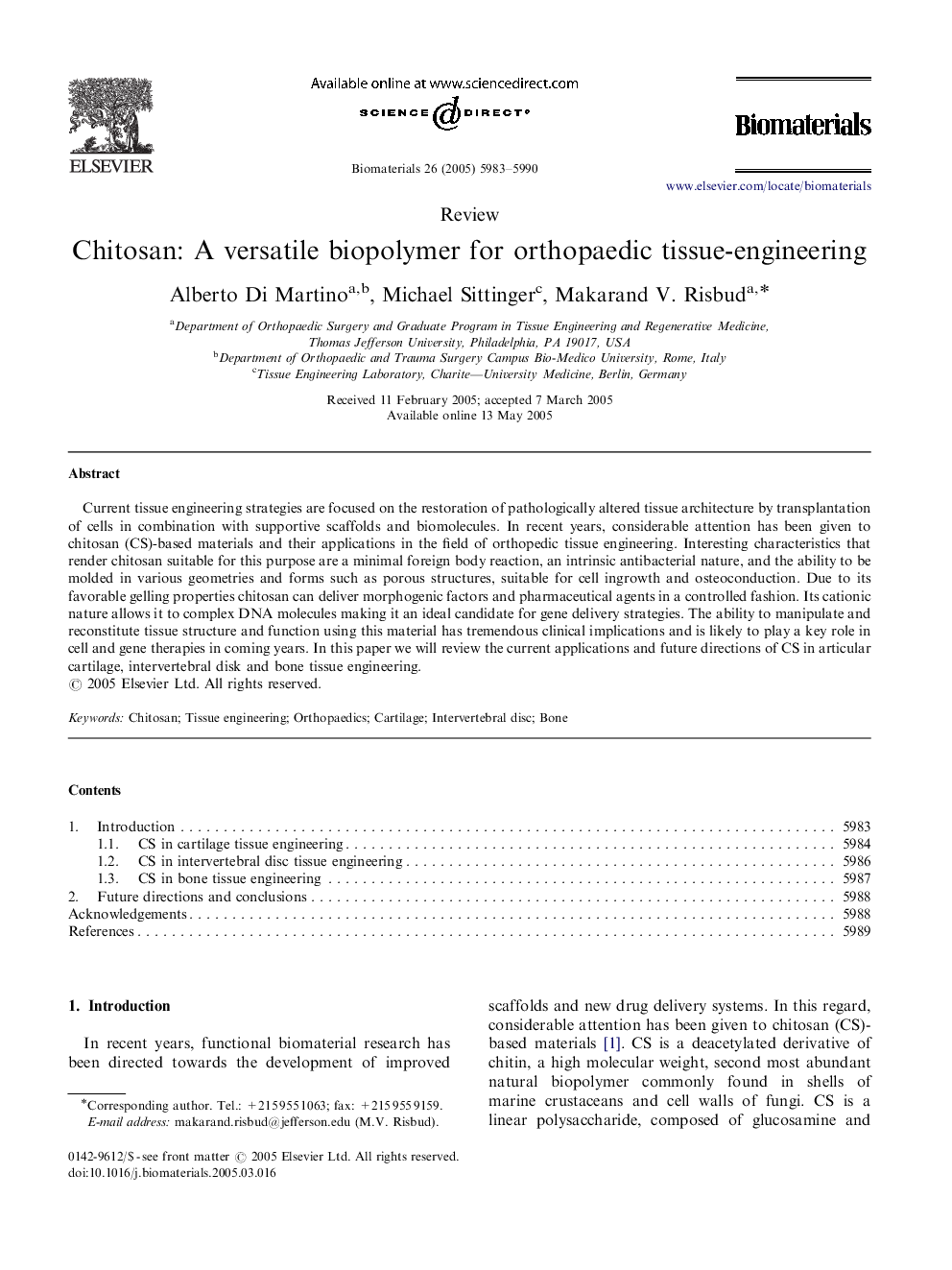| Article ID | Journal | Published Year | Pages | File Type |
|---|---|---|---|---|
| 12215 | Biomaterials | 2005 | 8 Pages |
Current tissue engineering strategies are focused on the restoration of pathologically altered tissue architecture by transplantation of cells in combination with supportive scaffolds and biomolecules. In recent years, considerable attention has been given to chitosan (CS)-based materials and their applications in the field of orthopedic tissue engineering. Interesting characteristics that render chitosan suitable for this purpose are a minimal foreign body reaction, an intrinsic antibacterial nature, and the ability to be molded in various geometries and forms such as porous structures, suitable for cell ingrowth and osteoconduction. Due to its favorable gelling properties chitosan can deliver morphogenic factors and pharmaceutical agents in a controlled fashion. Its cationic nature allows it to complex DNA molecules making it an ideal candidate for gene delivery strategies. The ability to manipulate and reconstitute tissue structure and function using this material has tremendous clinical implications and is likely to play a key role in cell and gene therapies in coming years. In this paper we will review the current applications and future directions of CS in articular cartilage, intervertebral disk and bone tissue engineering.
